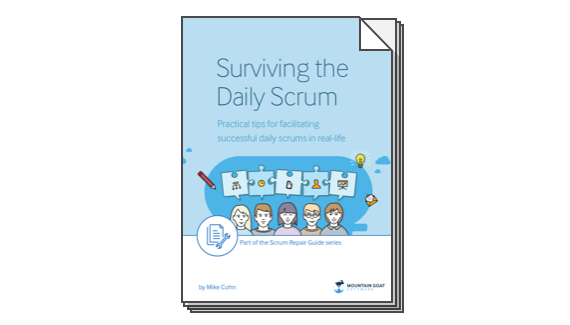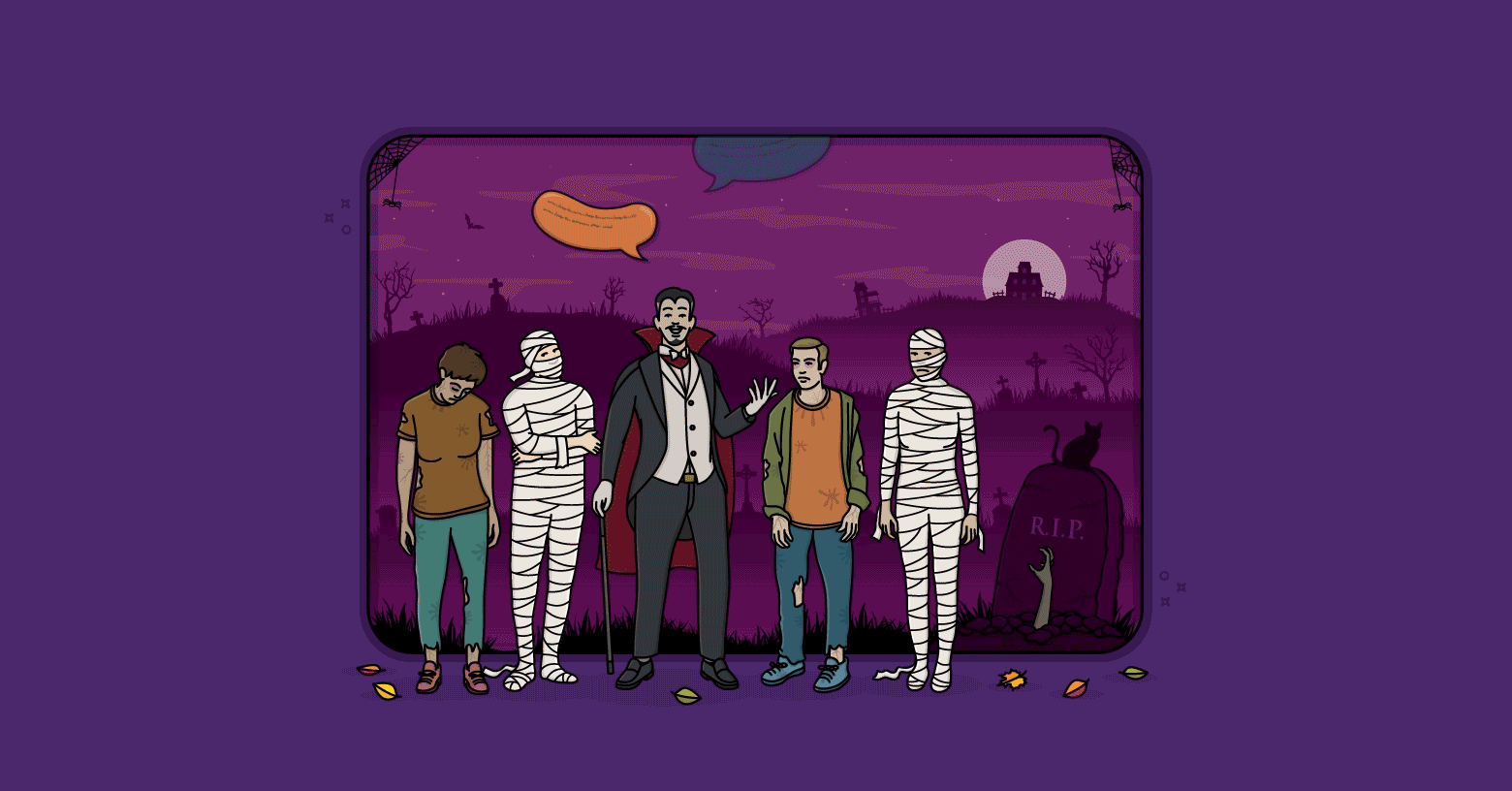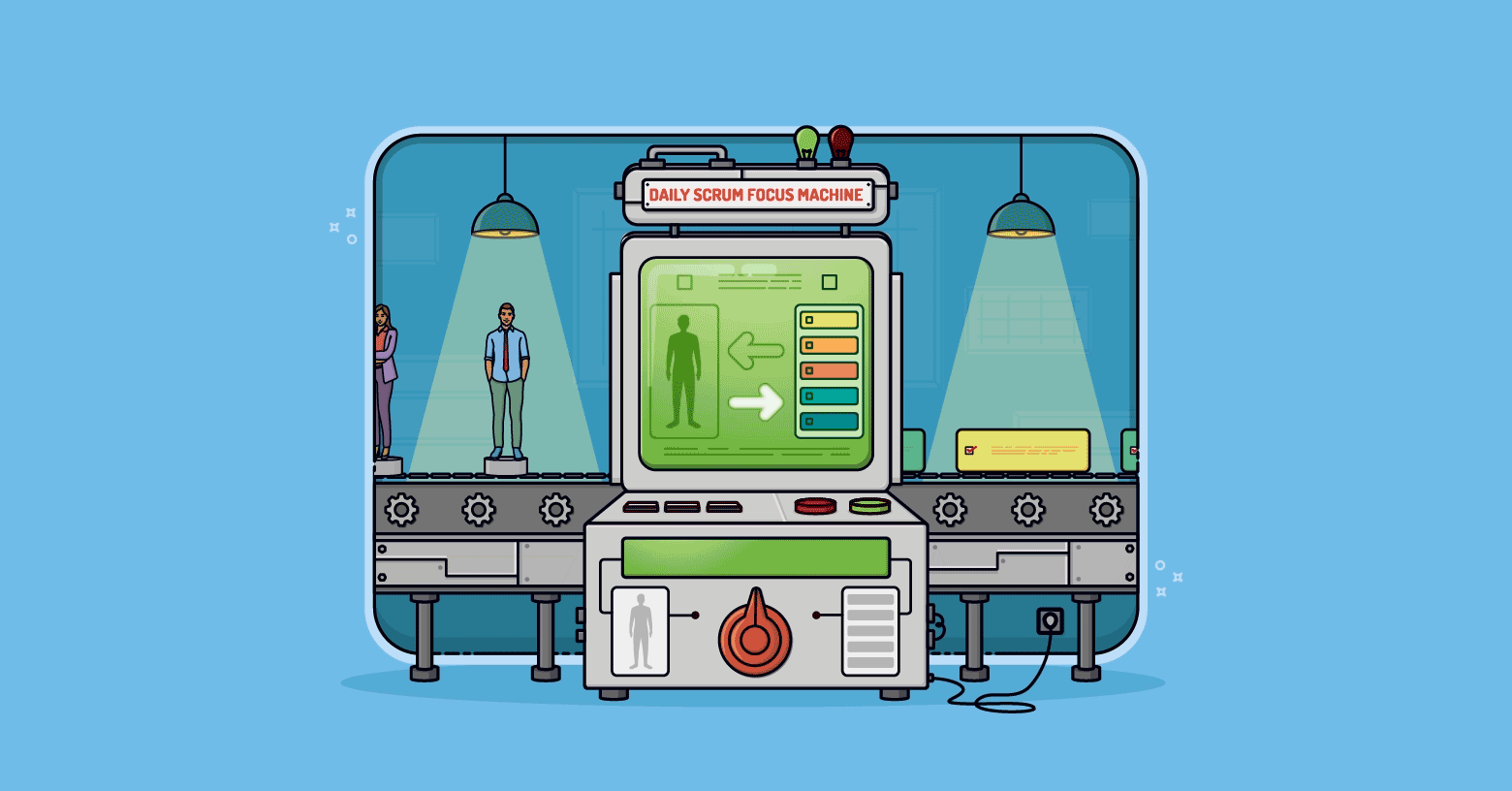You have undoubtedly had team members complain at some point about the length of your daily scrums. Join the club.
I want to share two extremely simple things you can do to put an end to most of those complaints. (I can’t promise getting rid of all complaints—some people will always complain.)
Tactic 1. Make the Daily Scrum Timebox Visible
The first thing Scrum Masters can do is to make it clear when the team is in the daily scrum and when they are taking time after the daily scrum to problem solve.
For example, if two hot issues are mentioned during the daily scrum, a good Scrum Master might stop discussion of those topics, following the guideline of no problem solving during the daily scrum. Then, at the end of the daily scrum, the Scrum Master will then bring the two topics back up and people will start discussing them. This leads to the team being there for longer than the standard timebox of 15 minutes for a daily scrum—and is often the cause of complaints. (You might consider occasionally breaking the 15-minute timebox when working with remote teams.)
To stop those complaints, end every daily scrum by announcing how long the meeting took. Do this right everyone has addressed the three questions of the daily scrum (either person by person or story by story) and before switching into problem-solving mode.
You might, for example, announce, “Thanks everyone. That took twelve minutes.”
Then, remind everyone of any problems or issues that were brought up. Suggest that those who are needed stay to discuss or resolve them: a practice often referred to as the sixteenth minute. If needed, facilitate the team splitting into more than one subgroup if more than one issue needs to be discussed.
The simple act of closing one meeting before beginning another will stop most teams from complaining about how long daily scrums take.
Tactic 2: Give People Permission to Leave
And important follow-on step to making the daily scrum timebox visible is to let anyone who isn't needed leave after the officialy daily scrum is over. Do this by announcing that those who are not needed to resolve any of the issues being discussed can leave.
By taking these two actions:
1. Calling the daily scrum officially over and announcing how many minutes it took; and,
2. Telling team members who are not needed for further discussions that they can leave
You will help team members from feeling that the daily scrum is exceeding its 15-minute timebox.
What Do You Think?
What have you done to eliminate complaints about the daily scrum? How have you helped your team see the value of this meeting? Please share your thoughts in the comments below.










The discussion here is closed but join us in the Agile Mentors Community to further discuss this topic.
Go to AgileMentors.com